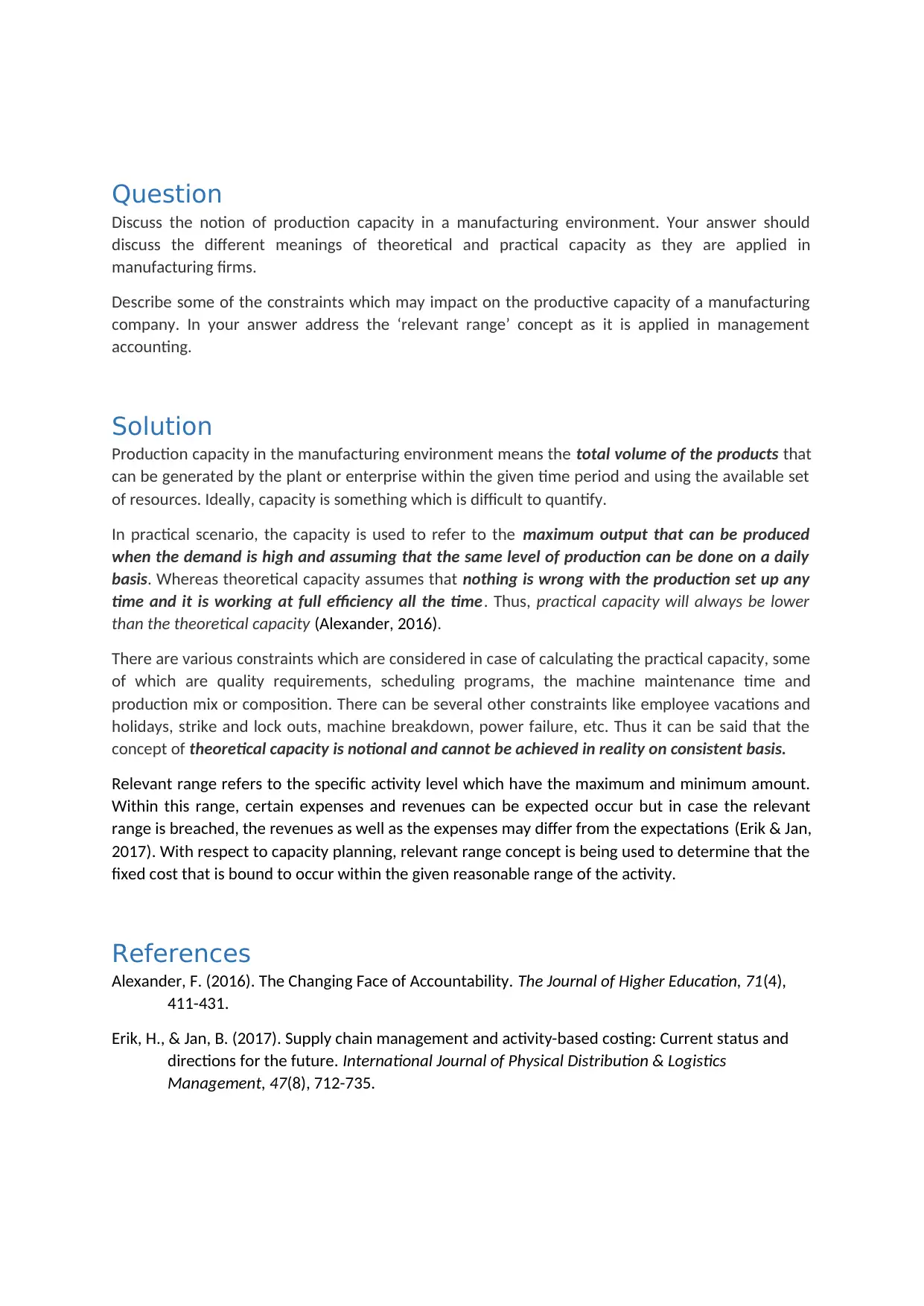Production Capacity, Constraints and Relevant Range in Manufacturing
VerifiedAdded on 2023/01/23
|1
|441
|73
Report
AI Summary
This report examines the concept of production capacity within a manufacturing environment, differentiating between theoretical and practical capacities. Theoretical capacity represents the maximum output under ideal conditions, while practical capacity considers real-world constraints like machine downtime, quality requirements, and scheduling issues. The report explores various factors that limit productive capacity, including employee absences, equipment failures, and power disruptions. Furthermore, it addresses the ‘relevant range’ concept in management accounting, highlighting how it helps in understanding fixed costs within a specific activity level. This report provides a comprehensive overview of capacity planning and its implications in manufacturing, supported by relevant references.







![[object Object]](/_next/static/media/star-bottom.7253800d.svg)